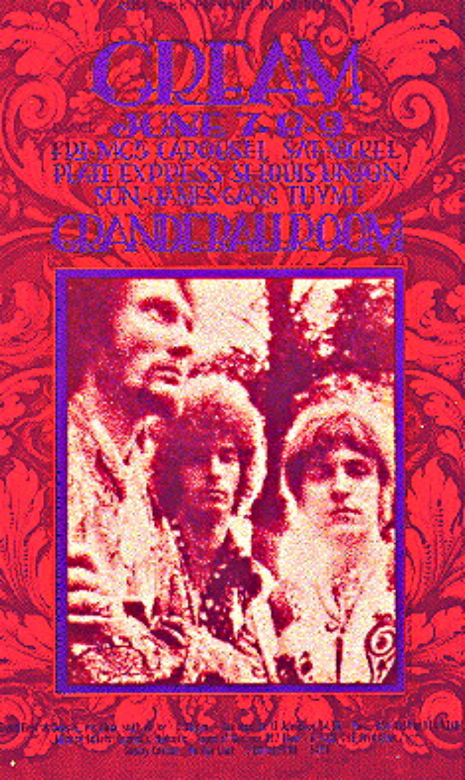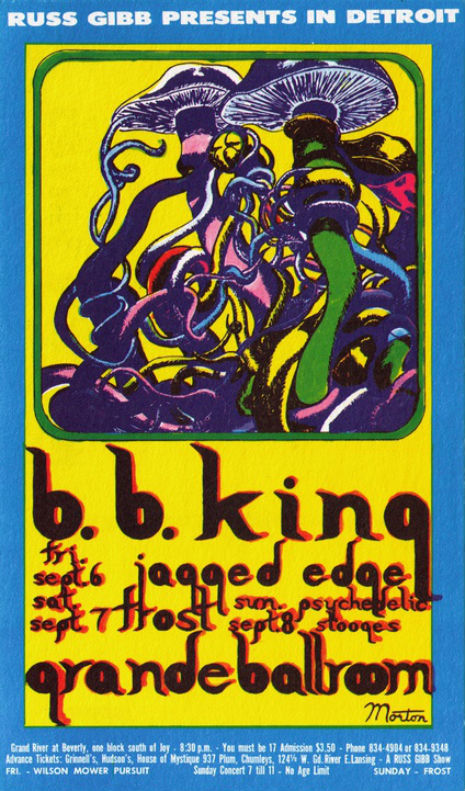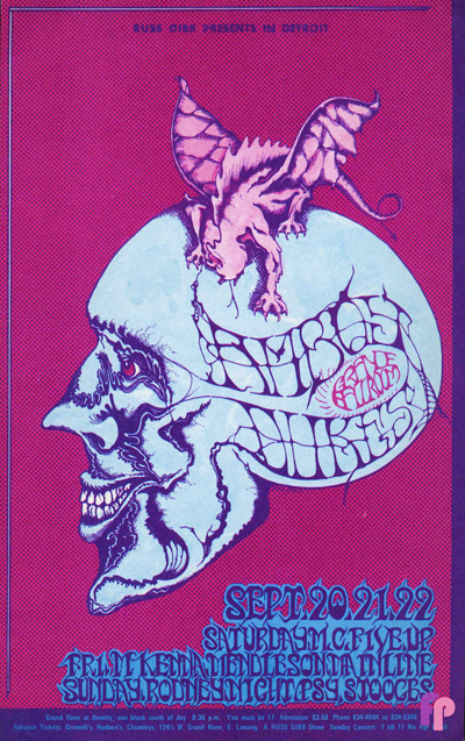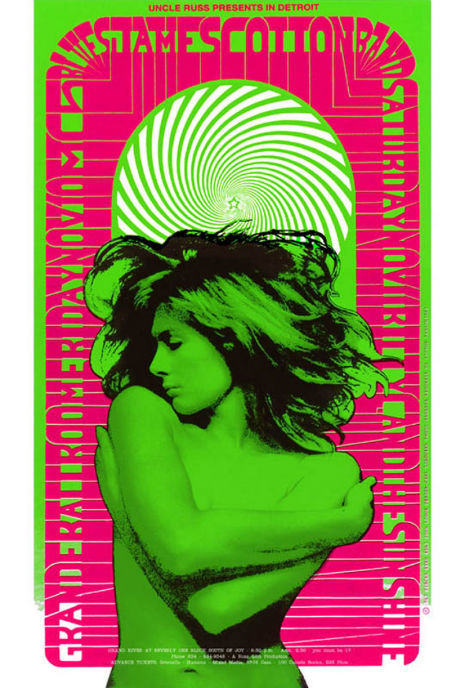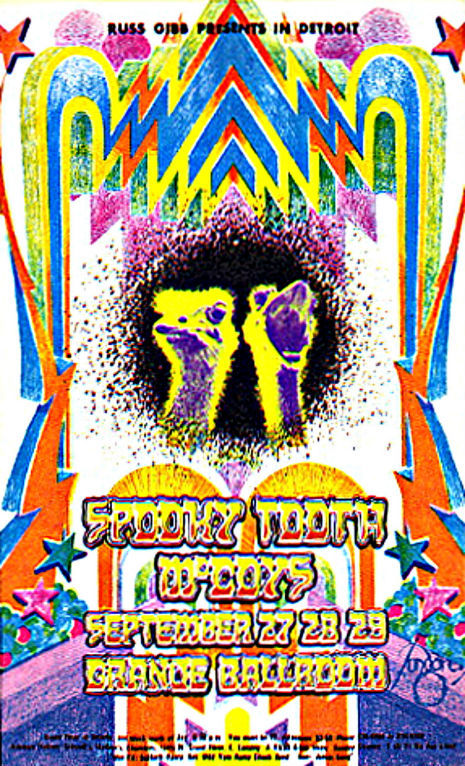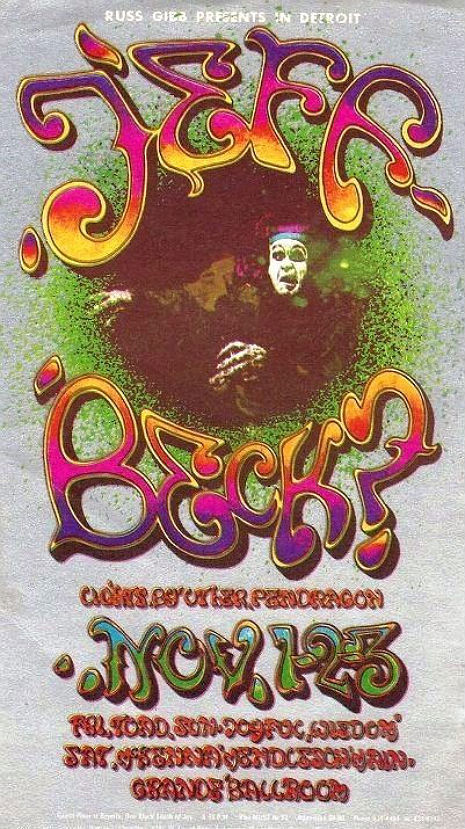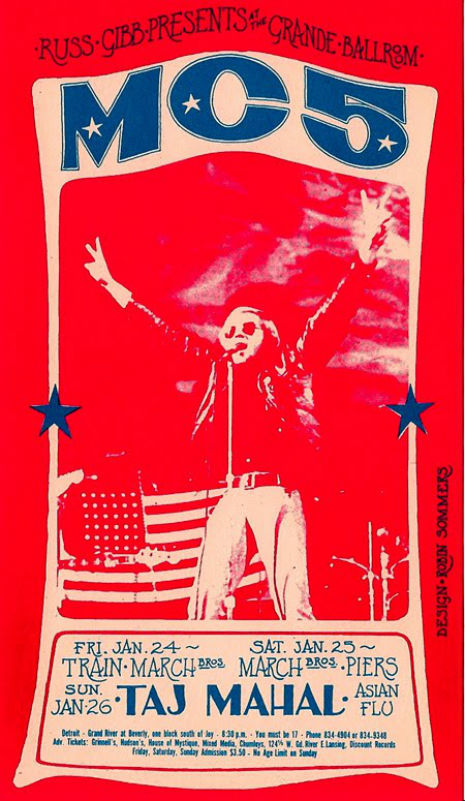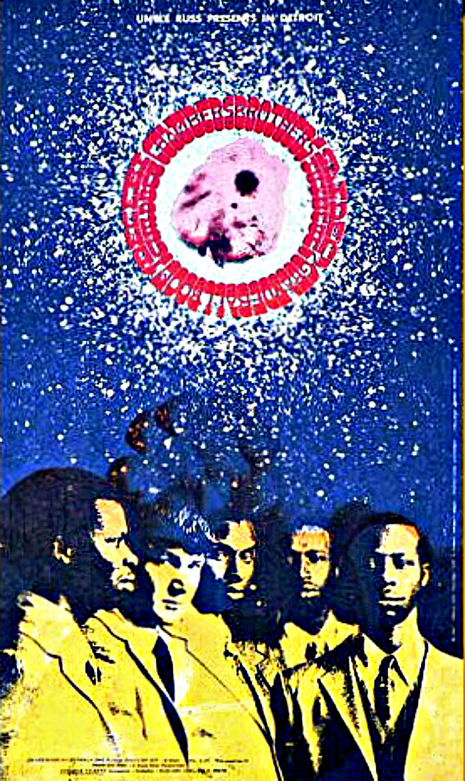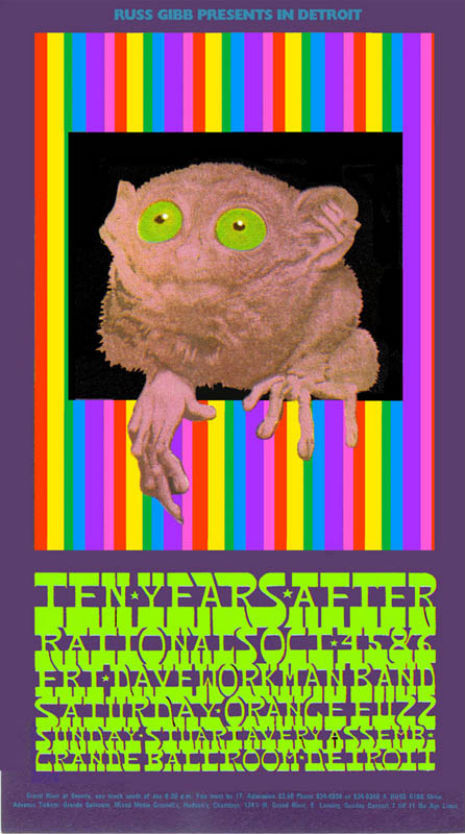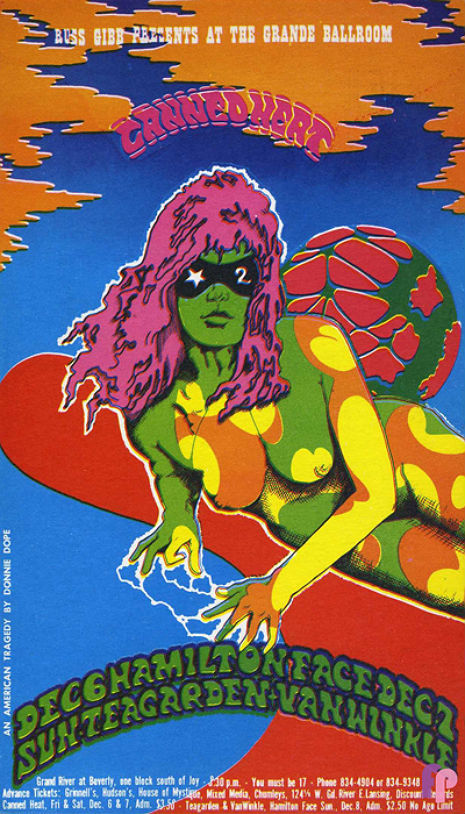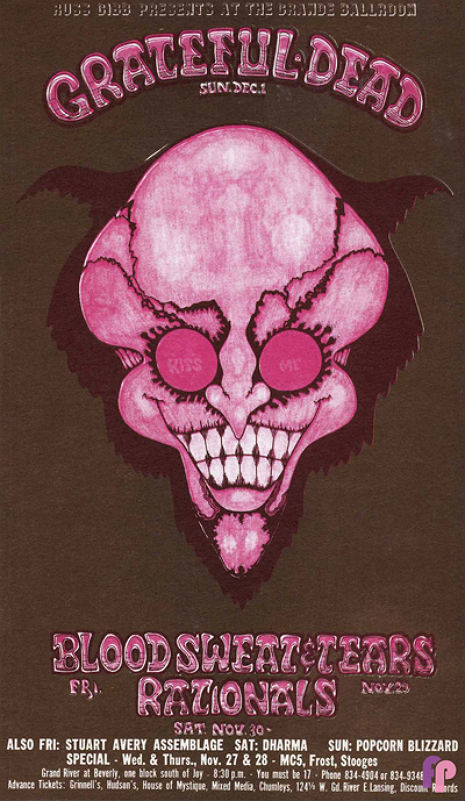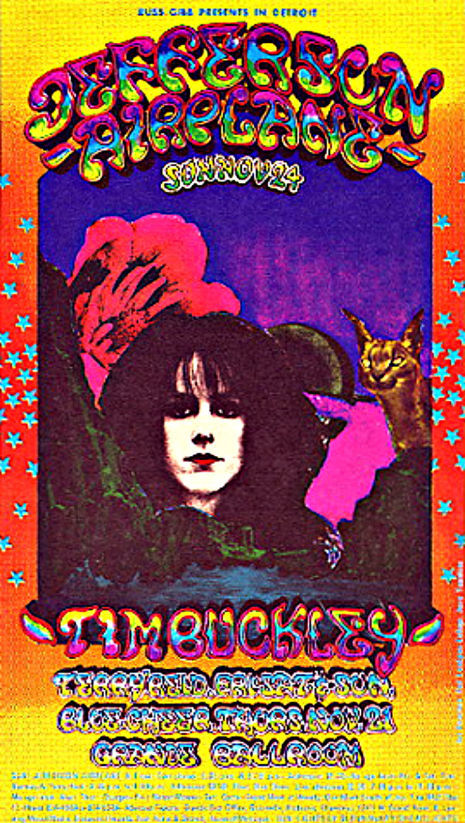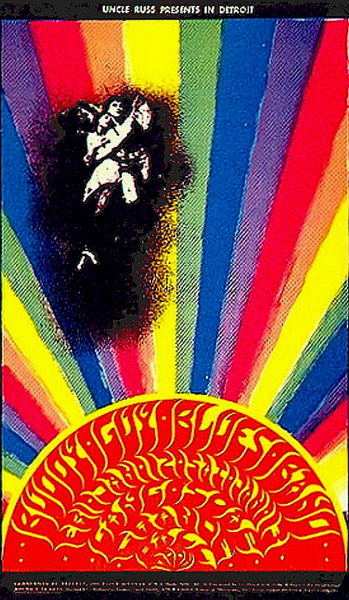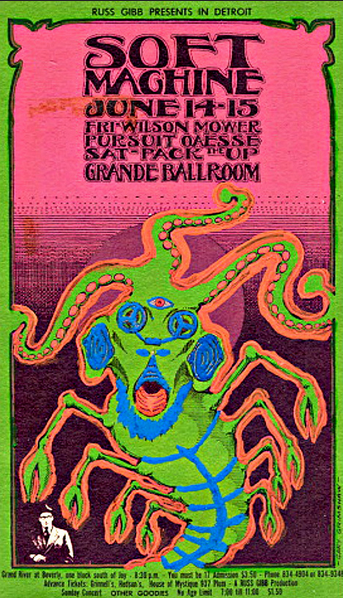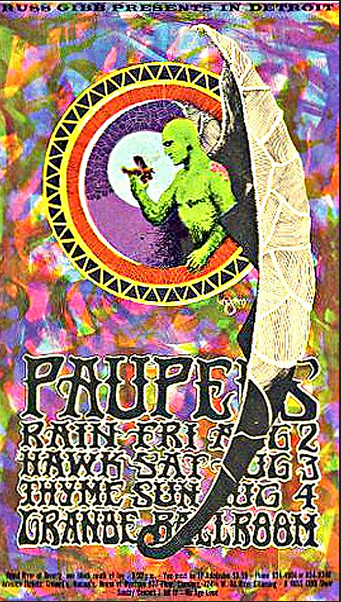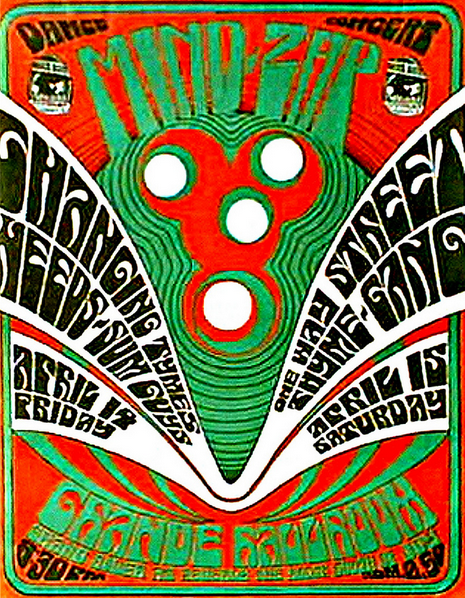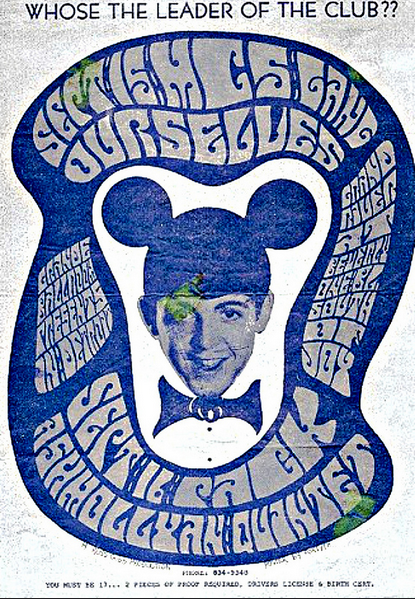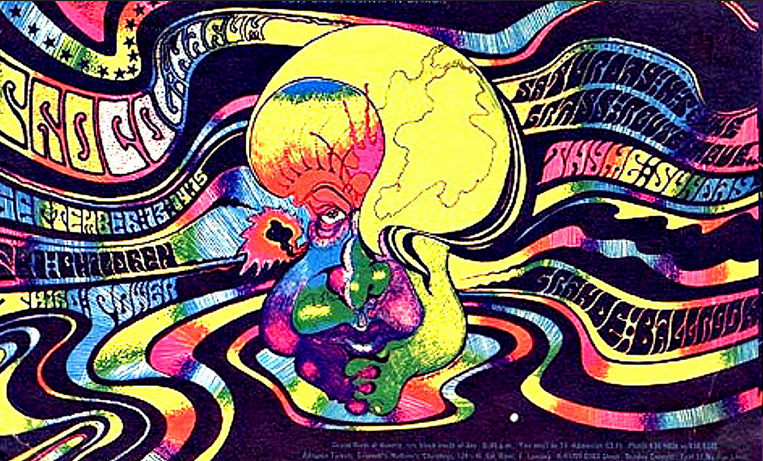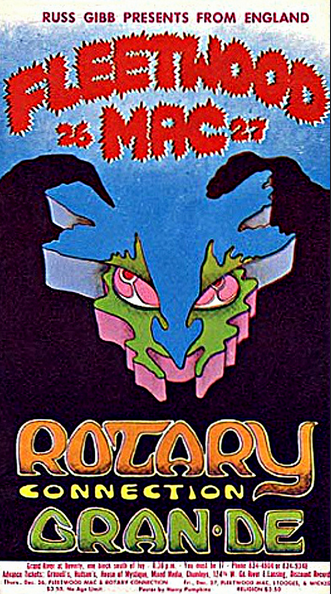Between 1967 and 1968, Detroit’s The Grande Ballroom, played host to some of the world’s best acts. Gary Grimshaw and Carl Lundgren used trippy colours and psycedelic themse to attract music fans.
Who was Uncle Russ? Historic Detroit knows:
Russ Gibb, a social studies teacher at Maples Junior High School in Dearborn was a popular local radio DJ at the time. Gibb took a trip out to San Francisco to visit a friend in early 1966 and paid a visit to the storied Fillmore Auditorium and saw The Byrds. When he returned to Detroit, he set out to bring Bill Graham’s Fillmore to the Motor City. He scouted out several locations, including the then-closed, since-demolished Gayety Burlesque theater on Cadillac Square downtown and the ballroom of the Statler Hotel on Grand Circus Park, which also has been razed. He settled on the Grande, which was near the neighborhood he grew up in back in the 1940s and entered a rent-to-buy deal with the Kleinman family.
“I remember going down there because my cousin would go dancing there, and we’d pick her up from the Grande,” said Gibb, who never went dancing there himself. “I was looking and trying to get a deal and had asked other disc jockeys if they wanted to kick in on the place. They were all doing record hops at the time, and they asked where it was. ‘You can’t do it down there,’ they said, ‘that’s a black neighborhood.’ … Well, kids always want to go where their parents don’t want them to go. And I knew location wouldn’t mean diddley if the music was there, they’d come. I knew what I saw in San Francisco would work here.”
Gibb would reach out into Detroit’s beatnik community and meet people like John Sinclair, a “long hair” who had just served a six-month sentence in the Detroit House of Corrections for marijuana possession and columnist for the counterculture newspaper The Fifth Estate. Sinclair would go on to manage The MC5 and become a counter-culture revolutionary, being the key figure in the hippie collaborative Detroit Artists Workshop, later known as Trans-Love Energies Unlimited.
“Russ Gibb went out to San Francisco, saw the first dances at the Avalon and the Fillmore by the Family Dog and Bill Graham Presents, respectively. And he came back to Detroit and thought we should have a place like that here. … He was going to have it be different. It wasn’t going to be like a teen club. It was going to be a place where bands would write their own material and have their own identity. There weren’t going to be any cover bands. There weren’t going to be any bar bands.”
Gibb, who would become known as “Uncle Russ,” molded the Grande after popular rock halls on the West Coast like the Fillmore and Whiskey A Go-Go. A massive screen hung behind the stage showing light shows and psychedelic water and oil images. The MC5 wound up being like the anchor of the Grande, playing there every week at least once. The band’s lead singer, Rob Tyner, introduced Gibb to his friend Gary Grimshaw, who would go on to become a legendary graphic artist, made its concert posters and handbills to promote the shows.
The Grande opened the evening of Oct. 7, 1966, to a crowd of about 60 people turning out to see the Chosen Few and The MC5. Before long, the rock music and the counter-culture environment started luring kids from the suburbs eager to shed the ties and ditch the Brylcreem. The Grande became “the embassy for the suburban youth, whose parents had spirited them out of Detroit forever,” Sinclair said. “They kind of thought the shopping malls were kind of lame, you know? They wanted to do something more interesting, so they started coming into the city. … Just as their parents feared, it rubbed off.”
It featured one of the largest strobe lights ever built at the time. While Gibb, who was paying about $700 a month in rent, started off booking local acts like the MC5, Stooges, SRC, The Frost and the Rationals, in 1967, he started bringing in famous touring rock acts, the first being Vanilla Fudge on Dec. 15. Other rock legends soon followed, pummeling the sweaty crowds in temperatures that sometime reached 100 degrees: Led Zeppelin, John Lee Hooker, the Yardbirds, Cream, Pink Floyd, Canned Heat, the Jeff Beck Group, The Byrds, Big Brother and the Holding Company, Chuck Berry, Howlin’ Wolf, the Velvet Underground, Canned Heat, the Steve Miller Band, Country Joe and the Fish, Blue Cheer, Tim Buckley and more all played the Grande.
This shift from local bands to touring acts started innocently enough, Gibb said, when Sinclair brought the band The Fugs in from New York. “I thought we’d get the hippie crowd, but we made some money on that. Some of the English bands, they’d get on a bus back in those days, start in New York, go to Cleveland, Chicago, St. Louis. So we were a logical stop from Cleveland or Buffalo. It really started as a matter of convenience for the English bands. Once they played the Grande and saw the sound was great, they spread the word. And once word got out in England that there was a great place where the people were cool, and the sound was cool and the city was cool, the Grande became a legend.”
Another talented artist who played a vital role in the success of the Grande Ballroom is Gary Grimshaw who designed dozens of colorful posters for the concerts.
Several of Grimshaw’s colorful works will be on display at 6 p.m. on Aug. 1 at the InsideOut Gallery in Traverse City. It’s a chance to raise a glass of LMawby’s “Detroit” to honor Grimshaw’s new limited edition design, a signed and number silkscreen print entitled “The Grande Bands.” This work pays homage to the great musical groups that performed at the historic Detroit venue.
“When I started the (film) project, it was about the music,” explains D’Annunzio. “But as I went along, I realized it was really about the culture that was being built. And a huge part of that was Gary Grimshaw’s art. It screams the ‘60s. He was friends with Rob Tyner (singer for the MC5). He wasn’t a musician, but he used his talents to support the music.”
Born in Detroit in 1946, Grimshaw graduated from nearby Lincoln Park High School. He’s been creating artwork since the age of 20 – that’s 66 years of continuously producing music-related graphic artwork.
“Gary and Rob were just hanging out when Russ Gibb called and wanted a poster,” recalls Laura Grimshaw, Gary’s wife. (Gibb was an influential WABX-FM disc jockey and concert promoter.) “Rob handed the phone to Gary and said ‘Grimshaw, This is for you.’ That first poster, with the flying seagull, was done overnight.”
As he continued to produce the eyegrabbing posters, Grimshaw’s reputation grew steadily as the Grande Ballroom artist and later as the MC5 artist.
“I’ve been trying to get people outside of Detroit to realize the importance Gary Grimshaw had (to the Grande),” says D’Annunzio. “These poster artists gave us a creative edge. It was so profound.”
Grimshaw was part of a collective of promoters, intellectuals, poets, artists and musicians. As a Vietnam vet, he was an antiwar activist and a key player in the White Panther Party, working to reform unfair laws and unjust incarcerations. His work appeared in newspapers, magazines, concert posters, record album covers.
“Gary’s artwork is so amazing,” says D’Annunzio. “Even the letters are rich, voluptuous, sexy and kind of risqué. To do what he did with the lettering in that psychedelic feel. And it was all done at a time with limited resources, no computers, all by hand, primitive by today’s standards. Everything was done from an experimental vantage point.”
Then and Now at the Deroit Grande:
The Jeff Beck Group – November 1-3 1968
The line-up for this outing featured:
Jeff Beck – Guitar
Ron Wood (Pre-Small Faces and Rolling Stones) – Bass
Nicky Hopkins – Piano
Mickey Waller -Drums
Rod Stewart (Pre-Small Faces) – VocalsLed Zeppelin performed here on three consecutive nights, January 17-19, 1969.
The Grande also featured the avant garde jazz of John Coltrane and Sun Ra.[3]
Performances of this period were frequently advertised by the distinctive psychedelic handbills of Gary Grimshaw and Carl Lundgren.[4][5] The Grande’s rock and roll countercultural experience was extensively documented by Detroit photographer Leni Sinclair.[6]Since Gibb closed the Grande as a rock venue in 1972, the building has rarely been used and has fallen into a state of disrepair. The last gig at the Grande was December 31, 1972 and also happened to be the last gig the MC5 ever played.
Spotter: WFMU, DM and a great Flirk pool
Would you like to support Flashbak?
Please consider making a donation to our site. We don't want to rely on ads to bring you the best of visual culture. You can also support us by signing up to our Mailing List. And you can also follow us on Facebook, Instagram and Twitter. For great art and culture delivered to your door, visit our shop.
